History of the 8 districts of Montepulciano
28 November 2017
When we talk about Montepulciano and in particular of its historic center, it should be remembered that this hamlet consists of 8 districts (called contrade), but lesser known than Siena, a town often mentioned for its 17 districts and the famous Palio.
The origin of Montepulciano districts seems to date back to 1337, as evidenced by a municipal statute of the town kept in the archives of the municipality, and today the 8 contrada are mentioned especially on the occasion of the Bravio delle Botti, the competition scheduled on the last Sunday of August (check our post The challenge among the districts of the hamlet for further info).
To know more about each district we invite you to read this article and then visit the historic center by walk: you will have an interesting starting point to deepen the history of Montepulciano and Bravio, originally a horse race, which became in 1974 a race with the barrels.
Gracciano
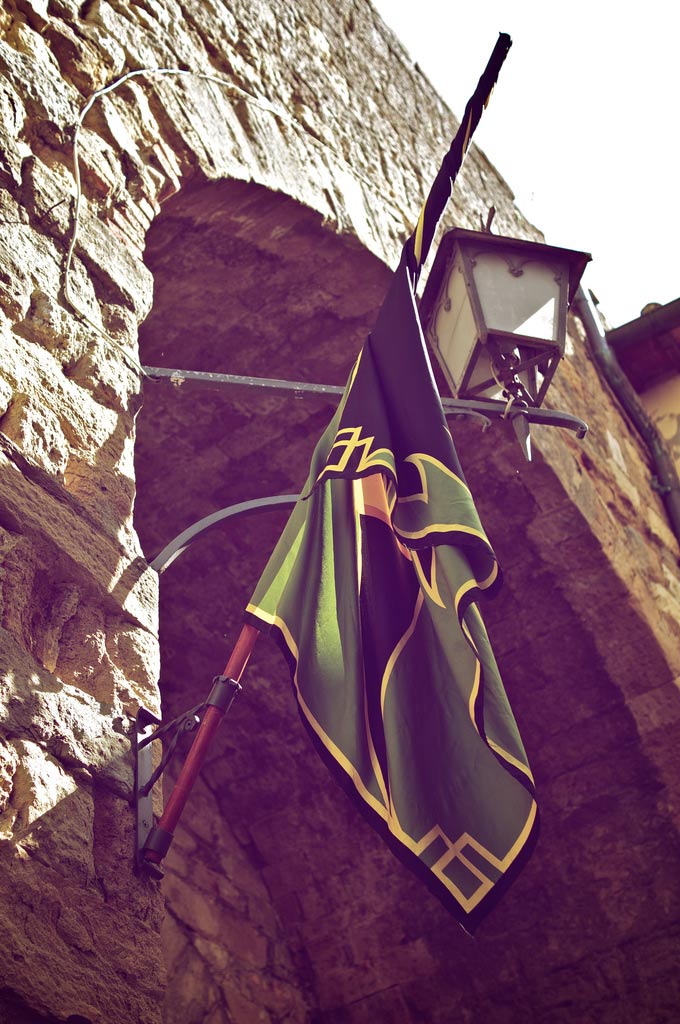
Credits: https://flic.kr/p/bDoTn5
Gracciano is the most recent district and the largest as extension, in fact many Renaissance palaces are part of this area.
The official colors of the district of Gracious are green and black, while among the attractions to see we suggest Porta al Prato, the main entrance to the historic center, restored by Antonio da Sangallo the Elder in the XVI century, Palazzo Boddi, Palazzo Boddi, Colonna del Marzocco, Palazzo Avignonesi and Palazzo Tarugi Bernabei.
We would also suggest to take a look at Palazzo Bucelli, which once housed a rich collection of Etruscan archaeological finds, today partly exposed in the Civic Museum of Montepulciano.
In Piazza Michelozzo you will notice Pulcinella Clock Tower, which has become one of the town’s symbols; the rings of the bell still mark the days of the inhabitants today.
Gracciano has so far won 7 editions of Bravio of the Botti.
Cagnano
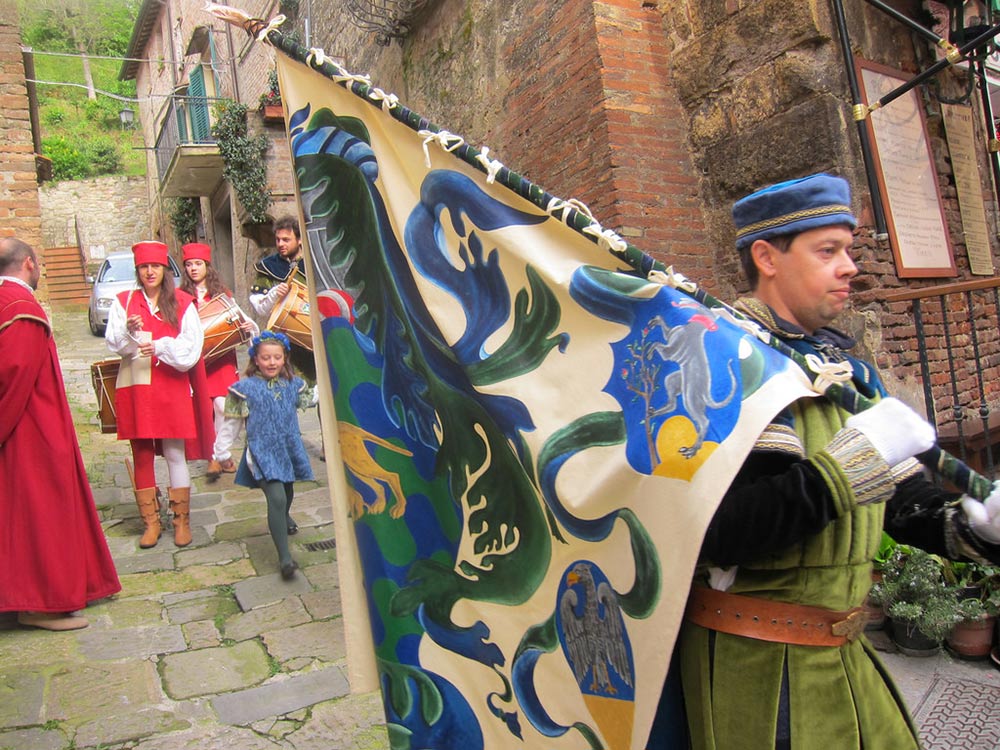
Credits: https://flic.kr/p/nr4bop
The hamlet of Montepulciano is articulated on three levels and Cagnano district is located in the second, where it has increased its importance due to the numerous craft shops and other commercial activities.
In this part of the town you can admire the Porta delle Farine, the Poliziano Palace, where the poet Angelo Ambrogini was born,and the Gothic church of Santa Maria dei Servi.
The colors of the district are green and blue and the victories of this contrada at the Bravio are 10.
Collazzi
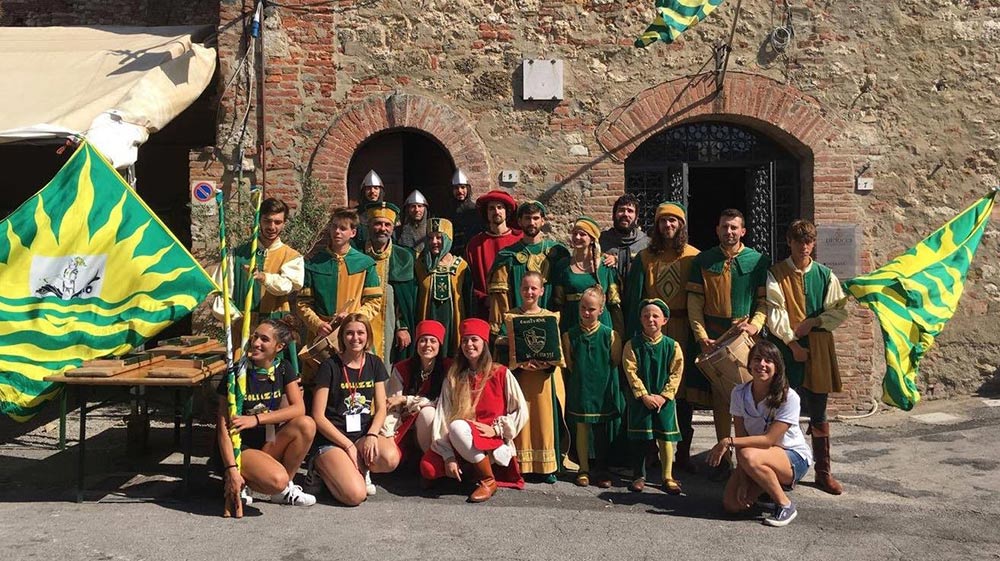
The Collazzi district isn’t an area known for monuments or other attractions, but it is one of Montepulciano’s most fascinating districts because it is a popular hub. It is located on the hill overlooking Pienza and Montefollonico.Here live about a hundred people and despite never having won the Bravio in August, it should be remembered that Collazzi was the first contrade to win the female version of the competition, Dama della Botte, a great acknowledgment for this contrada. The colors of the district are yellow and green.
Le Coste
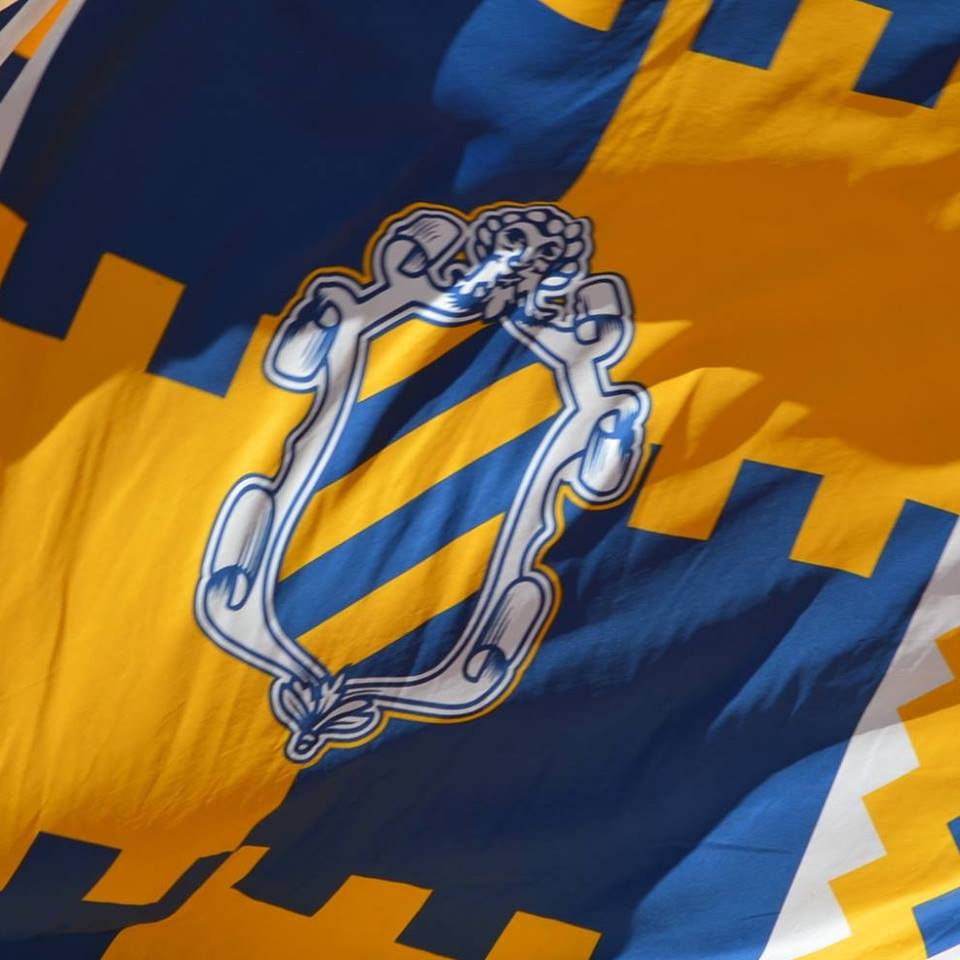
Originally, in the XIII century, Le Coste was a district where there weren’t any noble family and today includes, in addition to the area within the historic walls, the residential area of San Biagio.
Today is one of the most lively contrada, so far has won the Bravio 8 times and has yellow and blue as official colors.
Poggiolo
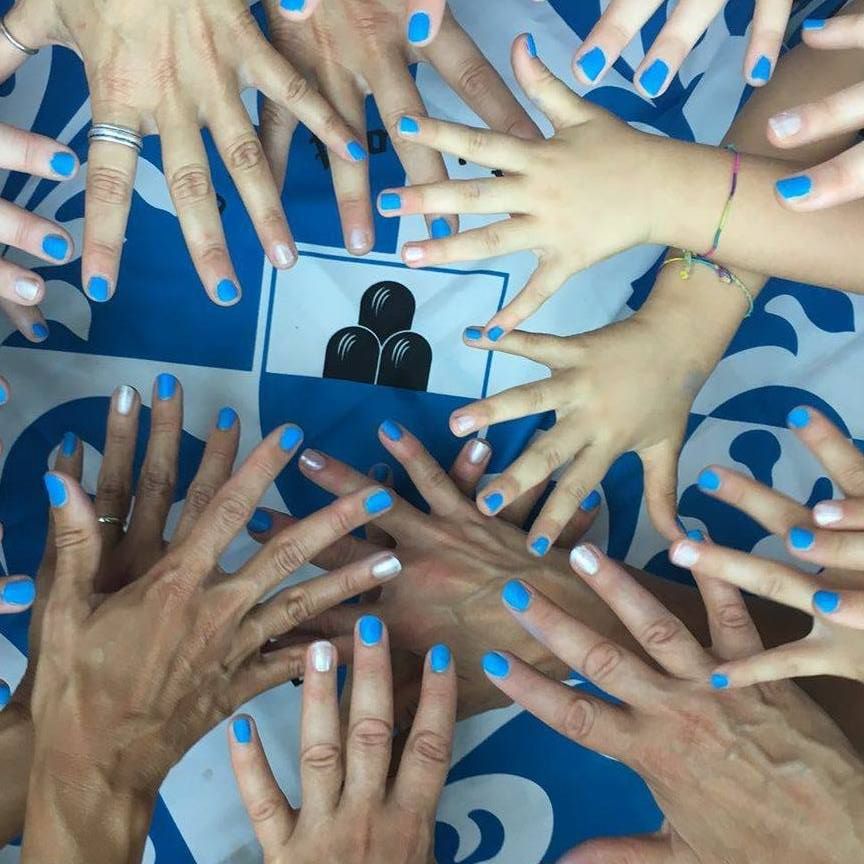
The name Poggiolo derives from the location of the district, on a hill overlooking the Val di Chiana and is situated lower than the hill where the center of Montepulciano is situated. We recommend to visit the complex of the church of Santa Lucia, designed in the XVII century by Flaminio Del Turco, and the tombstone in memory of Giuseppe Garibaldi on the facade of a house where the Hero of the Two Worlds stayed.
The overall wins of Poggiolo at Bravìo delle Botti are 4 and the official colors are white and blue.
Talosa
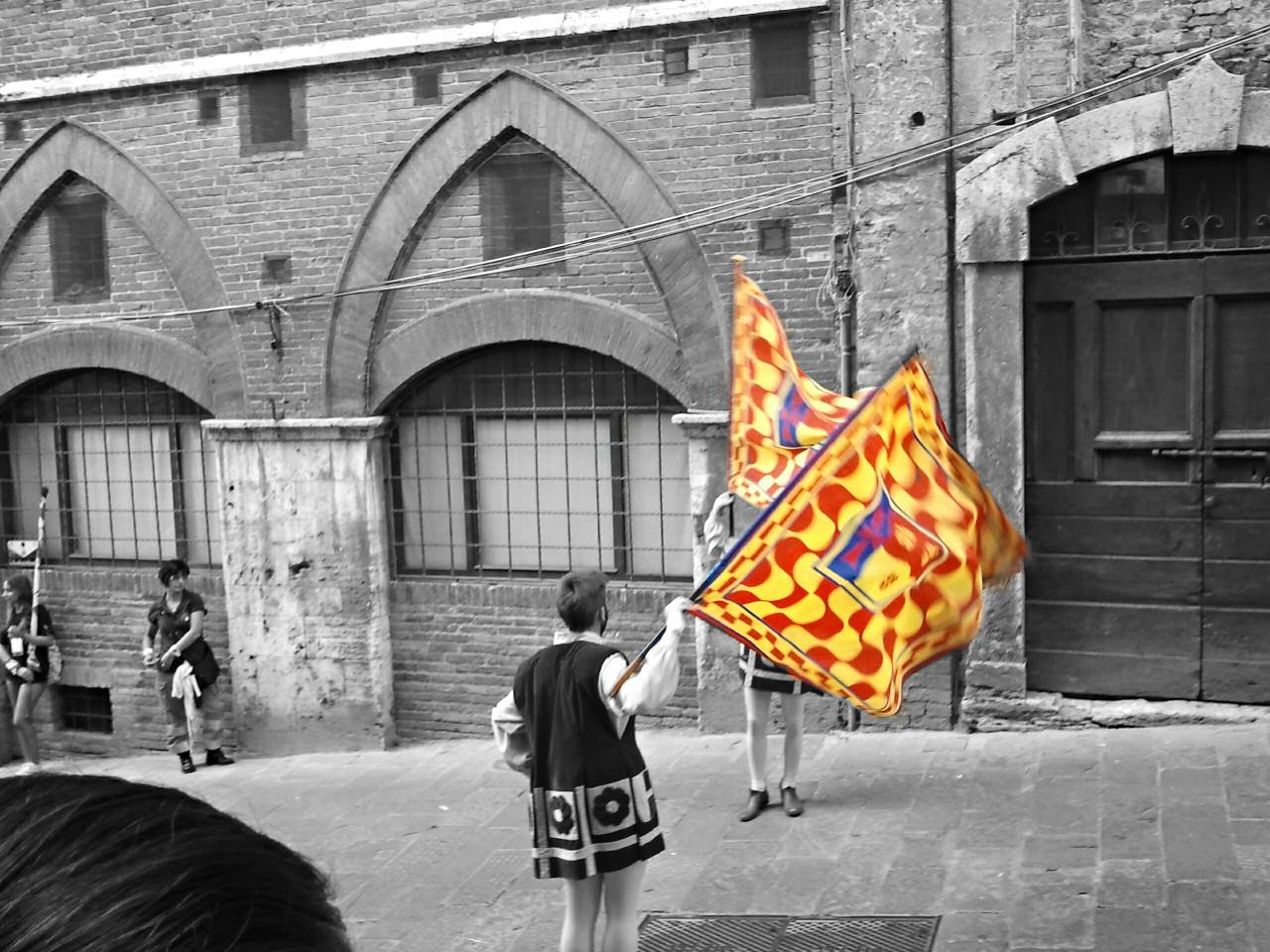
Talosa extends within the oldest walled town of Montepulciano, close to Piazza Grande, to the hillside of Poggiolo.This district, which has yellow and red official colors, features in its coat of arms the Croce dei Cavalieri di Santo Stefano, a tribute to the founder of the Oratorio dei Cavalieri di Santo Stefano (now known as St. Anthony’s Oratory), built in 1700 in via Ricci.
The Talosa district won four times the Bravio.
Voltaia
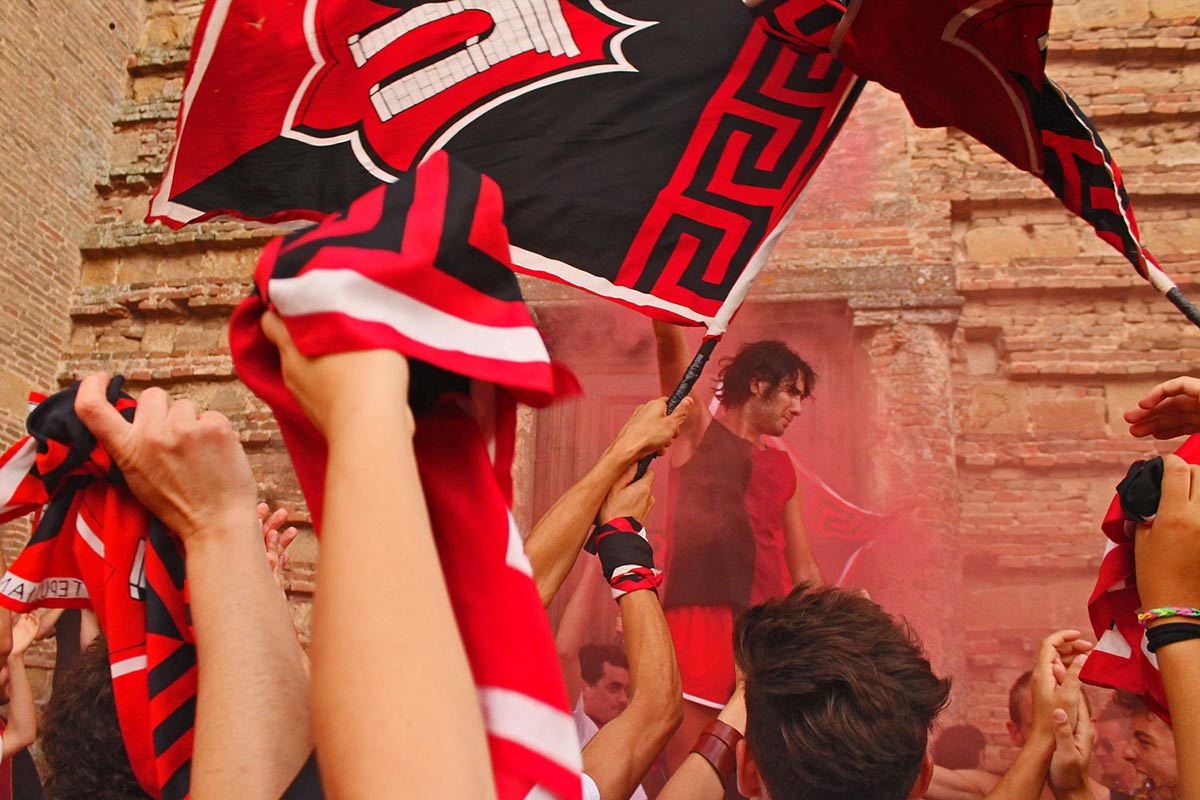
The second circle of fortified walls dates back to 1157 and is this part that encloses the district of Voltaia, winner of 5 editions of the Bravio, the last in 2017.
The center of the district is represented by the church of San Bartolomeo, built in 1236, and the territory extends within the Porta della Cavina.
This is one of the most populated districts in town and has red and black as official colors.
San Donato
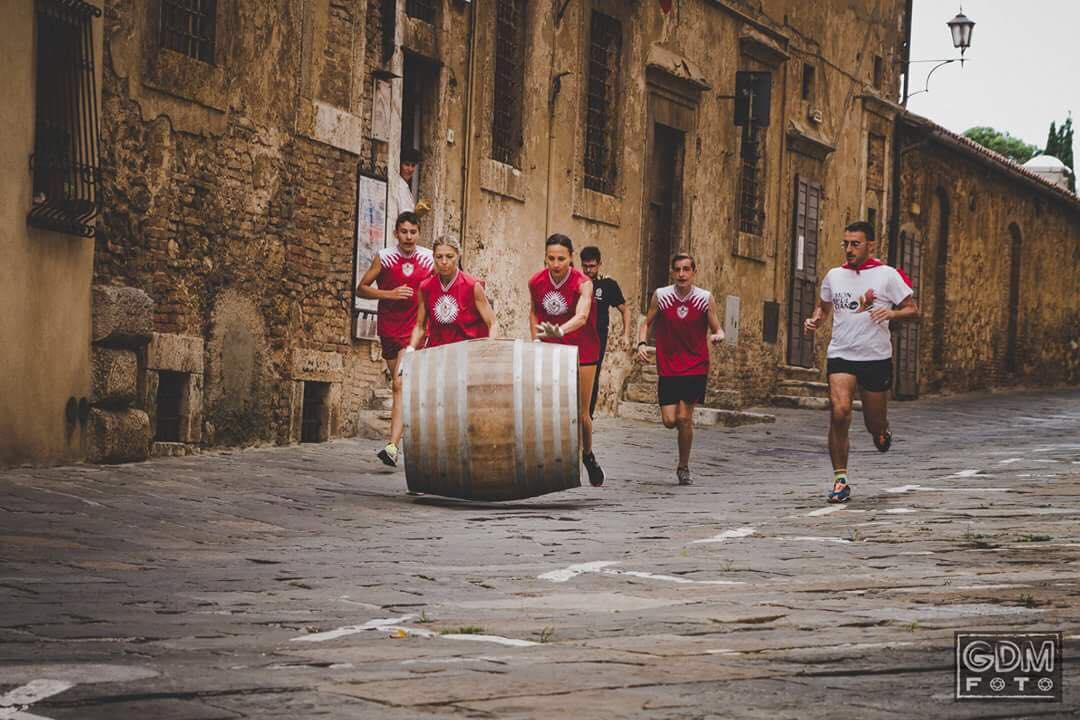
San Donato is at the same time one of the smallest districts and one of the most representative of Montepulciano, as it includes Piazza Grande, the Duomo, Palazzo Comunale, Palazzo Contucci, Palazzo Nobili-Tarugi and the Palace of the Palazzo del Capitano del Popolo.
The medieval fortress, at a short distance from the Piazza, was probably built on the remains of the first Etruscan-Roman acropolis and today only a few parts remain to witness the majesty of this place. White and red are the colors of the contrada, winner of 7 editions of the Bravio.
Montepulciano has many traditions to discover, so its districts are a chance to visit the historic center by following unusual paths.


